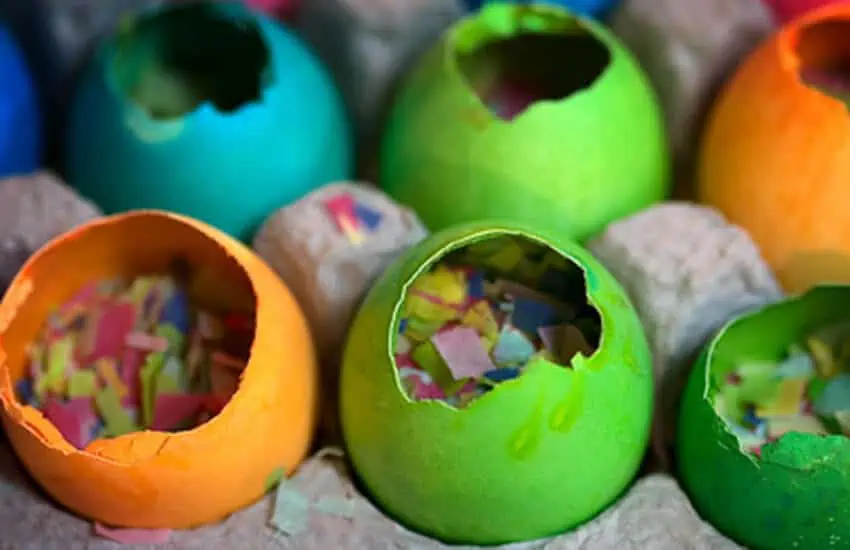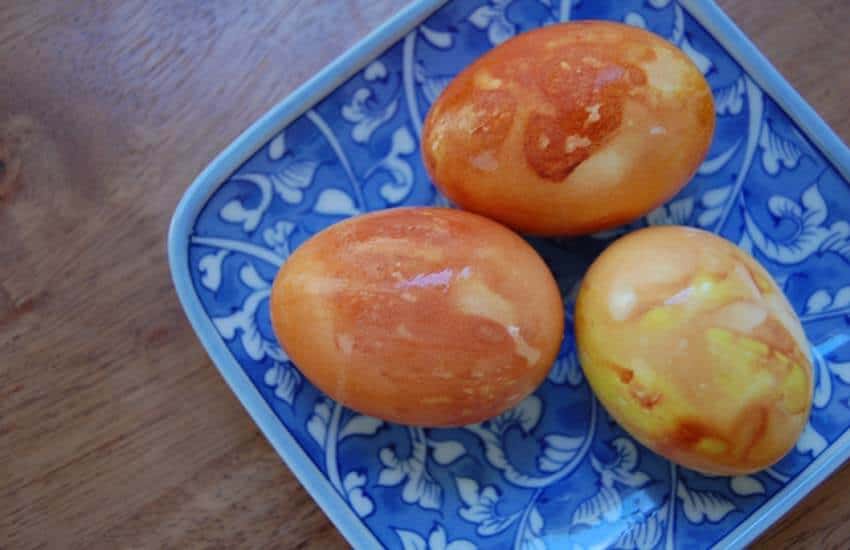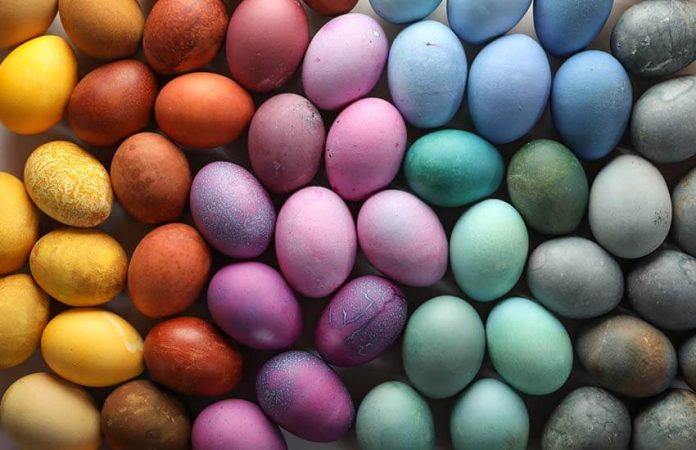Eggs have heralded the arrival of spring — symbolizing renewal, fertility and new life — since ancient times. Civilizations around the world have traditions of festively decorating eggs in all sorts of ways, and Mexico is no exception.
Cascarones, originally a Spanish tradition, are hollowed-out eggs, painted or covered with colored tissue paper and filled with confetti. (For weddings they can be filled with rice.) Revelers break them over each other’s heads at parties, marking the beginning of Lent. (In Mazatlán we just have Carnival!)
While Catholicism and Easter may want to claim the season, there’s another understanding of why eggs are associated with spring. Hens need light to lay eggs, and during the dark winter months — this has changed with the artificial environments of industrial farming — they don’t lay much. Once spring arrives, egg production begins again. Easter also ties in with the spring equinox, closely following other pagan festivals celebrating the change of seasons and return of warmer weather.
My somewhat more commercial Easter egg memories are colored by the Paas dye kits and fighting with my brothers and sisters over who got to use the little metal dipper. Nowadays when I’m in the kitchen, I try to slow down and do things as close to the source as possible. Cascarones sound too messy and difficult, but these natural egg dyes seem like a fun weekend project to do with the grandkids.
Because these are natural dyes, the eggs will dry several shades lighter than how they look in the water bath. For the deepest, richest colors, leave the eggs in the dye overnight, till they’re darker than the hue you want. At the very least, let them soak 3–4 hours.

The end results will vary, and, obviously, white eggs will color differently than beige or brown eggs! To add a little shine, rub eggs with a bit of coconut or vegetable oil. Play around and see what you end up with; that’s part of the fun.
Oh — and what to do with all those hard-boiled eggs? Classic egg salad, of course!
Classic Egg Salad
- 6 hard-boiled eggs, chilled and peeled
- ¼ cup homemade or store-bought mayonnaise
- ½ tsp. zest and 1½ tsp. fresh lemon or lime juice
- 1/3 cup diced celery
- ¼ cup minced scallions, white and pale green parts only
- 1 Tbsp. minced fresh parsley or cilantro
- Salt and pepper
Combine eggs, mayonnaise, lemon/lime juice, celery, scallions and parsley/cilantro in medium bowl. Using your hands, squeeze eggs through your fingers, mixing everything together until desired consistency; alternatively, smash and mix with a firm whisk.
Season with salt and pepper. Refrigerate in sealed container for up to 3 days.

Naturally Dyed Easter Eggs
- 3 cups yellow onion skins from 8-10 onions (creates orange)
- 3 cups purple/red cabbage, roughly chopped (creates cobalt blue)
- 3 Tbsp. ground turmeric (creates a vibrant yellow on white eggs and deep gold on brown ones)
- 3 cups chopped beets (for pink eggs)
- 3 cups fresh or frozen blueberries (for blue eggs)
- 3 Tbsp. hibiscus flowers (creates a dark green)
- 1.5 quarts water per dye ingredient
- 12 Tbsp. (¾ cup) white vinegar
- 2 dozen hard-boiled white, brown or blue eggs, or a mixture
To create a dye bath: Combine a single natural-dye ingredient with 1½ quarts water in a saucepan. Bring to a boil over high heat. Once the water is boiling, turn heat to low and simmer about 30 minutes. Remove pan from the heat; allow mixture to cool before straining the liquid into a large glass jar or bowl. (Avoid using stoneware as dye can stain.) Dispose of the solids.
Stir 2 Tbsp. of white vinegar into the dye. Repeat for each of the dye ingredients in separate pots, or use the same pot washed thoroughly after each preparation.
To dye the eggs: Add a single layer of hard-boiled eggs to a jar or baking dish; pour dye over them until completely submerged. For soft, pastel colors, allow eggs to soak for 2–3 hours; for vibrant, richer colors, place the dye bath of eggs in the fridge and soak overnight. You can dip the eggs in different baths to create different colors; for example, purple eggs result from dyeing eggs in the beet dye and then in cabbage dye.
To remove eggs from the dye: Use a slotted spoon, gently removing eggs and allowing them to dry completely before handling them. (Dye can rub off or streak if eggs are handled before they’re dry. Use a cooling rack or empty egg carton for drying.
Estonian Onion-Skin Wrapped Easter Eggs
These eggs are not pre-boiled before coloring; cooking and dyeing happens all at once.
- 12 white eggs
- Skins of at least 8–10 onions
- 1 Tbsp. white vinegar and 1 tsp. of salt per quart of water
- Decorative elements like leaves, leafy herbs, uncooked rice, etc. to leave impressions against the eggshells
- Muslin or other inexpensive soft fabric, cut into squares
In your hand, wrap each egg with onion skins, placing any of the decorative elements next to the egg, inside the onion skins. (For darker color, use several layers of onion skins.) Place the onion skin-covered egg onto a fabric square. Wrap tightly; secure the ends with twine. Wrap all the eggs the same way.
Fill a pot with cold water; add wrapped eggs. Add 1 Tbsp. vinegar and 1 tsp. salt per quart of water. Cover; bring to a boil. Reduce heat and simmer 15 minutes. Remove pot from heat, lift eggs out. Cool, still wrapped, on wire rack. When eggs are completely cool, unwrap and let dry completely.
Janet Blaser is the author of the best-selling book, Why We Left: An Anthology of American Women Expats, featured on CNBC and MarketWatch. She has lived in Mexico since 2006. You can find her on Facebook.
